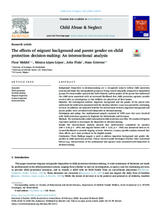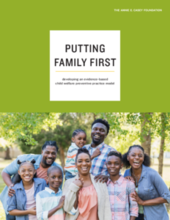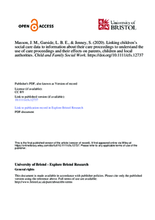Displaying 11 - 20 of 191
The authors of this study draw on the decision-making ecology model of judgement and decision making in child protection to speculate on possible causes of false positive errors in decision making regarding the removal of Aboriginal and Torres Strait Islander children from their families.
The authors of this study investigated whether migration background and the gender of the parent who maltreated the child seem associated with the decision whether a case was opened for continuing services.
This article looks at how Miracle Foundation applies principles of trauma-informed care (TIC) at every stage: from intake and care at a CCI while awaiting placement, to preparing children and families for transition, and finally to supporting post-placement.
This Guideline aims to further provide technical guidance to child protection workers in Cambodia to better respond to the child protection risks during a COVID-19 pandemic through case management, including psychosocial support.
This paper from the Annie E. Casey Foundation provides guidance for state child welfare agencies on what to consider when developing a preventive practice model that aligns with the requirements of Family First, addresses the unique needs of families within local communities and ensures that selected programs and practices are feasible to implement with quality.
As part of a larger project on decision‐making at intake, this systematic review addressed the question of the factors associated with worker decisions to investigate alleged maltreatment referrals.
This paper explores the potential of data linkage to contribute to understanding interactions between care proceedings and care demand, the examination of changes in practice through the analysis of cohorts of children in the care system, or receiving services, and the provision of feedback to those working in the family justice system on the outcomes of care proceedings for children in the UK.
The present study aimed to investigate both familial and mother/father-related risk and protective factors that influenced CPS (Child Protection Services) workers’ decision about the child placement through the “judgment analysis” approach.
The purpose of this assessment is (a) to review existing case management systems within and in relation to the Ministry of Community Development and Social Services (MCDSS) in Zambia and (b) make recommendations on how case management can be enhanced to ensure more efficient and effective service delivery to vulnerable children and adolescents.
This country care review includes the Concluding Observations of the Committee on the Rights of the Child and the Committee on the Rights of Persons with Disabilities. The Committees' recommendations on the issue of Family Environment and Alternative Care, and other care relevant issues, are highlighted.








